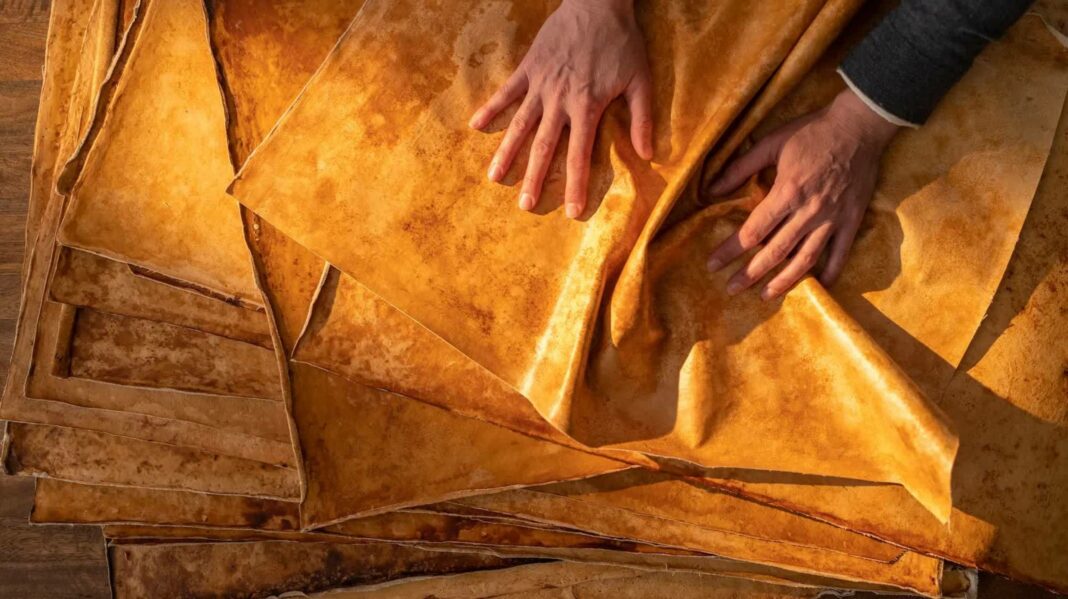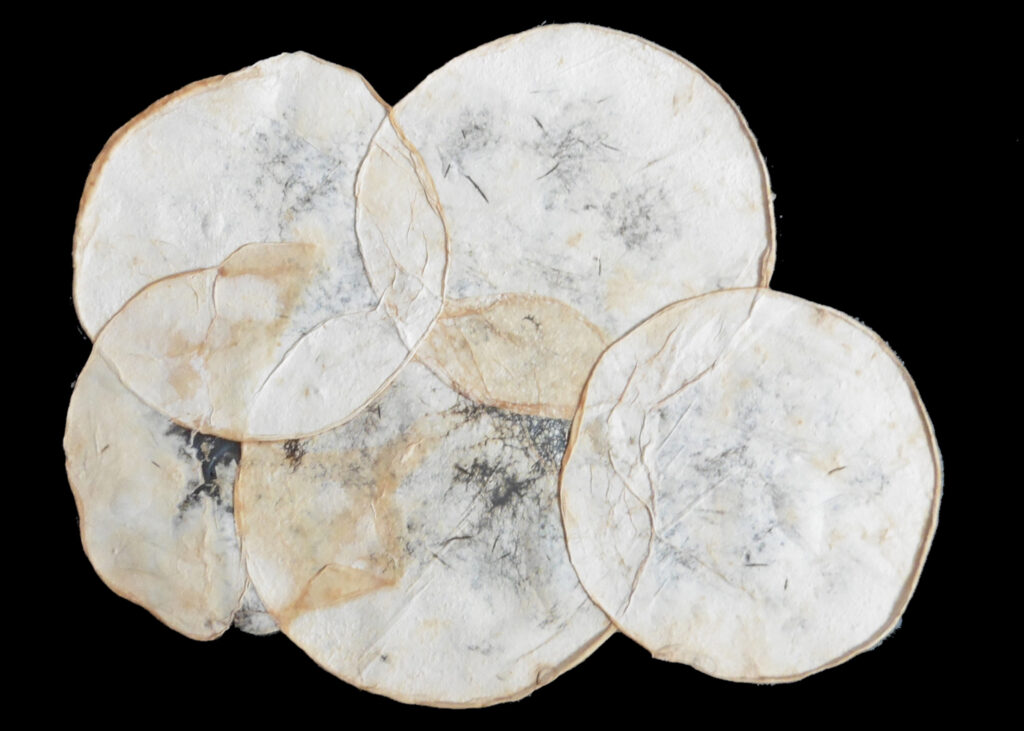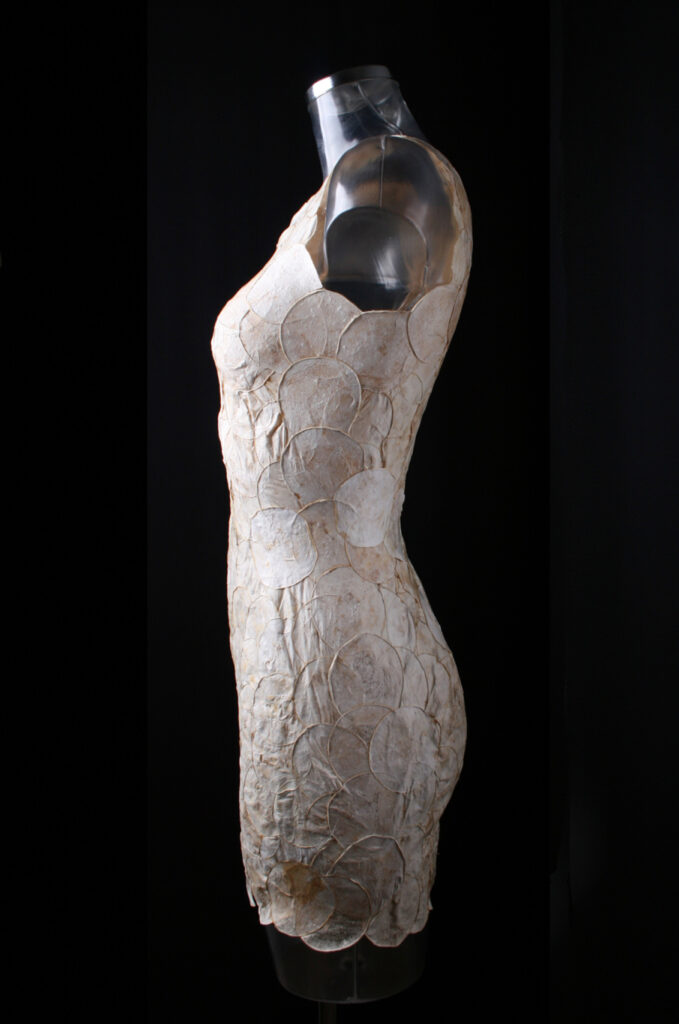It’s called bio-fabrication. And it means that what we wear in the future might be created from algae, bacteria, compost waste, and, yes, mushrooms.
Fast fashion is a well-known climate villain, sending roughly eighty-five percent of what’s produced each year to the landfill. However, the emergence of bio-fabrication, a process that uses living organisms like algae, fungi, bacteria, and compost waste to create organic fabric, is generating a sense of possibility that fashion can shift to a more sustainable model. “Fashion has a pollution problem that only biology can help fix,” says Natsai Audrey Chieza, designer and founder of Faber Futures, a biodesign lab working on creating sustainable materials. One of Faber’s projects aims to replace toxic dyes with a bacteria dye that uses 500 times less water.
Aniela Haitink of Neffa (New Fashion Factory) is another pioneer in this transformation of the fashion industry. Neffa demonstrated the potential of biomaterials in 2016 when they produced a dress using mushroom Mycelium. Today Neffa — also known as MycoTEX — produces materials by growing mycelium using food-grade ingredients. The mycelium is filtered and harvested before being put into a customizable mold, where it bonds together to form a fabric.
Similarly, Mycoworks, another biotech company, uses fungal cells to create a non-animal, premium leather alternative. The company grows fungal cells in a lab, producing a root system that it has trademarked as Fine Mycelium. This Fine Mycelium is then placed on trays and processed to fit a designer's exact specifications, thereby eliminating any waste from excess scraps. The result is what Mycoworks calls Reishi, a leather substitute processed using chromium-free chemistry. (Traditional chromium-tanned leather is fast and cheap but produces chromium waste, which is harmful to plants and to human health.) In March 2021, luxury fashion brand Hermés debuted their Victoria bag, featuring Fine Mycelium. The bag was praised for its sustainability, though its price tag — 3,500 euros — raised some eyebrows.
It did, however, demonstrate proof of concept. “There is a whole spectrum of organisms that can grow materials [for fashion],” says Suzanne Lee, the CEO of biofabrication startup Modern Meadow. Modern Meadow recently began producing a line of bio-based fabrics called ZOA, made of plant-derived proteins. Modern Meadow recently introduced dyes that chemically bind directly to the proteins in the ZOA fabrics. Not only does this allow for deeper colors and superior colorfastness, but the solution-dyeing process also yields zero residual waste.
These and other bio-based materials can be produced in ways that imitate the characteristics of materials like silk, leather, and wool, but with much less environmental impact. What's more, these materials can incorporate bioluminescence and biodegradability. Bio-fabrication is not only a scientific innovation but also a creative and artistic expression that challenges the boundaries of fashion, from using bacteria dyes as an alternative to previously used toxic dyes, to taking inspiration from the structure of mushrooms and spiderwebs and displaying with them the intricate patterns and proteins found in organic materials. As Phil Ross, co-founder of MycoWorks, says, “Fine Mycelium is a result of a carefully choreographed ritual, where the body, the hands, and decision making are involved.”

Although the original goal of bio-fabrication was to create more technologically advanced materials, it now focuses primarily on sustainability and biodegradability, providing a solution that helps reduce the environmental impacts of the fashion industry.
The aim of biofabrication for companies like MycoWorks, Neffa, and others, is to expand the acceptance of bio-fabricated materials by collaborating with fashion houses and producing bio-based products like clothings, bags, and shoes. According to a report by Materials Innovations Initiatives (MII), new innovations using next gen bio-based materials are expected to replace animal- and fossil fuel-based textiles in the fashion Industry by 2026. This report also notes the potential for considerable growth in the bio-based materials industry: there are currently some seventy-five innovators at work in the field, and since 2015, the sector has seen more than $1.29 billion in investment.
Though bio-based materials have different levels of durability depending on their characteristics and processing methods, they are both durable and eventually, biodegradable. Fashion has recognized the potential of fungi and other organic materials as an alternative source for sustainable and innovative fabric that eliminates at least some of the industry’s toxic side effects.






Amazing article 💯